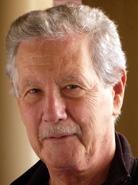Remacle F, Heath JR, LEVINE RD.
Electrical addressing of confined quantum systems for quasiclassical computation and finite state logic machines. PROCEEDINGS OF THE NATIONAL ACADEMY OF SCIENCES OF THE UNITED STATES OF AMERICA. 2005;102 :5653-5658.
AbstractConduction spectroscopy measures the current I through a nanosystem as a function of the voltage V between two electrodes. The differential conductance, dl/dV, has peaks that can be assigned to resonance conditions with different electronic levels of the system. Between these increments, the current has roughly constant plateaus. We discuss how measurements of the current vs. voltage can be used to perform Boolean operations and hence construct finite state logic machines and combinational circuits. The inputs to the device are the source-drain voltage, including its sign, and a gate voltage applied in a manner analogous to optical Stark spectroscopy. As simple examples, we describe a two-state set-reset machine (a machine whose output depends on the input and also on its present state) and a full adder circuit (a circuit that requires three inputs and provides two outputs).
Gross A, LEVINE RD.
Evanescent high pressure during hypersonic cluster-surface impact characterized by the virial theorem. JOURNAL OF CHEMICAL PHYSICS. 2005;123.
AbstractMatter under extreme conditions can be generated by a collision of a hypersonic cluster with a surface. The ultra-high-pressure interlude lasts only briefly from the impact until the cluster shatters. We discuss the theoretical characterization of the pressure using the virial theorem and develop a constrained molecular-dynamics procedure to compute it. The simulations show that for rare-gas clusters the pressures reach the megabar range. The contribution to the pressure from momentum transfer is comparable in magnitude and is of the same sign as that (''the internal pressure'') due to repulsive interatomic forces. The scaling of the pressure with the reduced mechanical variables is derived and validated with reference to the simulations.
Katz E, Baron R, WILLNER I, Richke N, LEVINE RD.
Temperature-dependent and friction-controlled electrochemically induced shuttling along molecular strings associated with electrodes. CHEMPHYSCHEM. 2005;6 :2179-2189.
AbstractThe temperature and solvent composition dependence of the electrochemically stimulated rate of shuttling of the redox-active cyclophane, cyclobis(paroquat-p-phenylene), on a molecular string has been studied. The molecular string includes a pi-donor diiminebenzene-site that is associated on one side with on electrode, and stoppered on the other side with on adamantane unit. The cyclophone rests on the pi-donor site, owing to stabilizing pi-donor-acceptor interactions. Electrochemical reduction of the cyclophone units, to the bis-radical cation cyclophone, results in the shuttling of the reduced cyclophane towards the electrode, a process that is driven by the removal of the stabilizing donor-acceptor interactions, and the electrostatic attraction of the reduced product by the electrode. The latter process is energetically downhill, and is temperature-independent. Upon oxidation of the reduced cyclophane that is associated with the electrode, the energetically uphill shuttling of the oxidized cyclophane to the pi-donor site proceeds. The rote of this translocation process has been found to be temperature-dependent, and controlled by the solvent composition. The experimental results have been theoretically analyzed in terms of Kramers' molecular friction model. The theoretical fitting of the experimental results, using solutions of variable composition, reveals that the rate-constants for the uphill reaction in a pure aqueous solution follow the temperature-dependence of the viscosity of water. The results demonstrate the significance of friction phenomena in shuttling processes within molecular machines.

